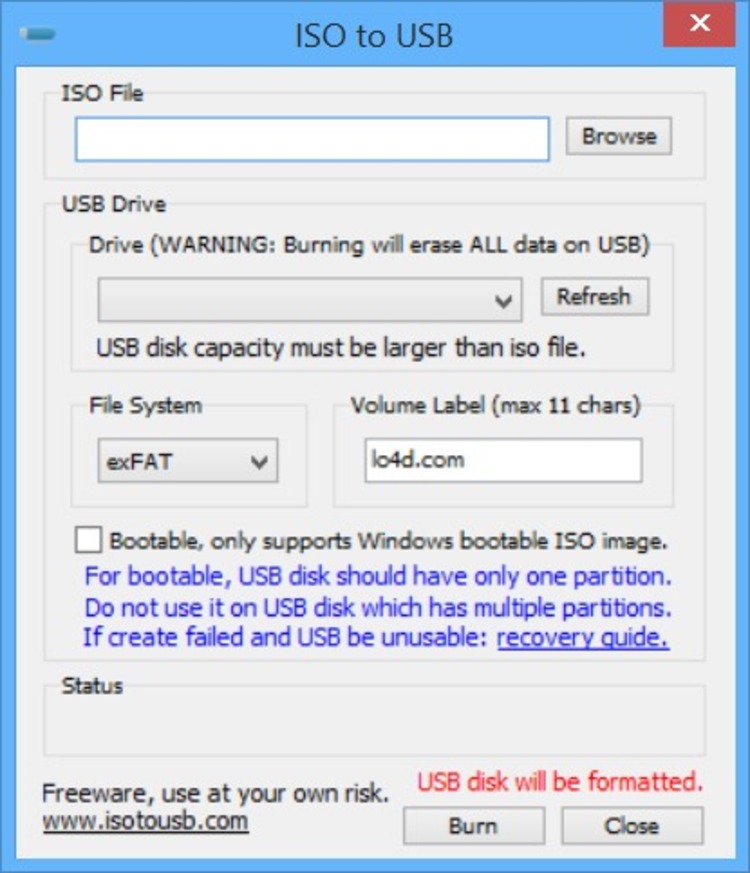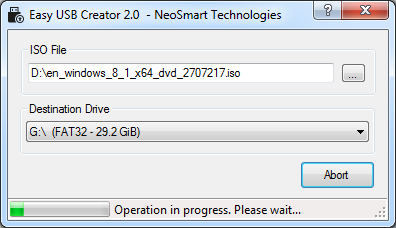

swm files, this way, they always booted in both UEFI & MBR)
:max_bytes(150000):strip_icc()/Rufus-5b1189273de4230037c42a6f.jpg)
So, the Isos, which are having files ( extracted ) larger than 4GB, has to be applied to the boot media with some tricks. But FAT32 can only support files that are less than or equal to 4GB.

Be patient and let it do its thing.Īnd press the Enter key. This operation takes quite a while (seconds in my case). This is why you must be logged in as an administrator, a non-administrator does not have to privileges to perform this operation. Sudo dd if=/path/to/file.dmg of=/dev/diskN bs=1mĪnd press the Enter key, where /path/to/file.dmg is the full path from step 3, and /dev/diskN from step 7. This will unmount the USB stick (it will disappear from your desktop).

The location of that device has the format /dev/diskN, where N is a number. Now you see the same list, but with an extra storage device. Now a list of your storage devices is displayed in the Terminal window, underneath what you typed earlier.Ħ.Put the USB stick in the USB port of your Mac.Īnd press the Enter key. The Terminal application is located in the folder /Applications/Utilities/ of your Macintosh HD volume.Īnd press the Enter key. We will need that for step 9.Ĥ.Start a Terminal window. Write down the full path name as mentioned in the dialog box. I followed the following instructions on how to burn an ISO to USB in OS Xġ.Download the.


 0 kommentar(er)
0 kommentar(er)
